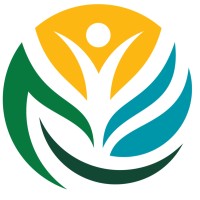http://www.ncbi.nlm.nih.gov/pubmed/24792413Study is among the first to link long-term exposure to fine particle air pollution, also known as PM2.5, to elevated levels of the reactive protein CRP.
Press Releases
The fish advisory for Clear Lake provides information on fish and shellfish important to Tribal members and other fish consumers. Newly added species of interest to Tribal members include threadfin shad, prickly sculpin, mosquitofish, inland silversides, winged floater mussels, and Asian clams.
Health advisory recommendations for each of the fish species are based on levels of methylmercury and polychlorinated biphenyls (PCBs) in fish sampled from Little Rock Reservoir.
Vasona Lake and Camden Ponds are part of the 150-acre Vasona Lake County Park in Los Gatos. The largest pond is stocked with rainbow trout. The advisory is based on data from the State Water Resources Control Board’s Surface Water Ambient Monitoring Program and the San Francisco Bay Regional Water Quality Control Board.
The guidelines for 16 fish species in San Diego Bay and an accompanying advisory for 12 species in nearby Mission Bay. The recommendations for Mission Bay are less restrictive than for San Diego Bay, with no fish species listed in the “do not eat” category. The recommendations are based on the levels of methylmercury and PCBs in different fish species in the two bodies of water.
State sport fish advisory for San Luis Obispo County’s Oso Flaco Lake. Oso Flaco Lake is part of the Oceano Dunes State Vehicular Recreation Area, a California State Park. More than 50 fish from the lake were collected and analyzed for the presence of contaminants. The pesticides the fish were tested for—chlordanes, DDTs, and dieldrin—are legacy chemicals that have been prohibited for many years due to their high toxicity and persistence in the environment.
Sport fish advisory for San Bernardino County’s Silverwood Lake recommends eating rainbow trout and avoiding bass, bluegill, catfish, blackfish and tui chub from the reservoir. The recommendations are based on the levels of methylmercury and polychlorinated biphenyls (PCBs) in different fish species in the lake.
Statewide sport fish advisory recommends that women aged 18-45 and children under 18 should choose wild-caught rainbow trout and smaller brown trout over bass, carp, and larger brown trout caught in California’s lakes and reservoirs.
CalEnviroScreen 1.0 is a science-based tool that identifies the California communities most burdened by pollution from multiple sources and most vulnerable to its effects.
Guidelines for safe consumption of Striped Bass, White Sturgeon, and other fish advisories. This advisory and guidelines balance the health benefits of eating wild-caught fish against the health risks from exposure to contaminants in them.
